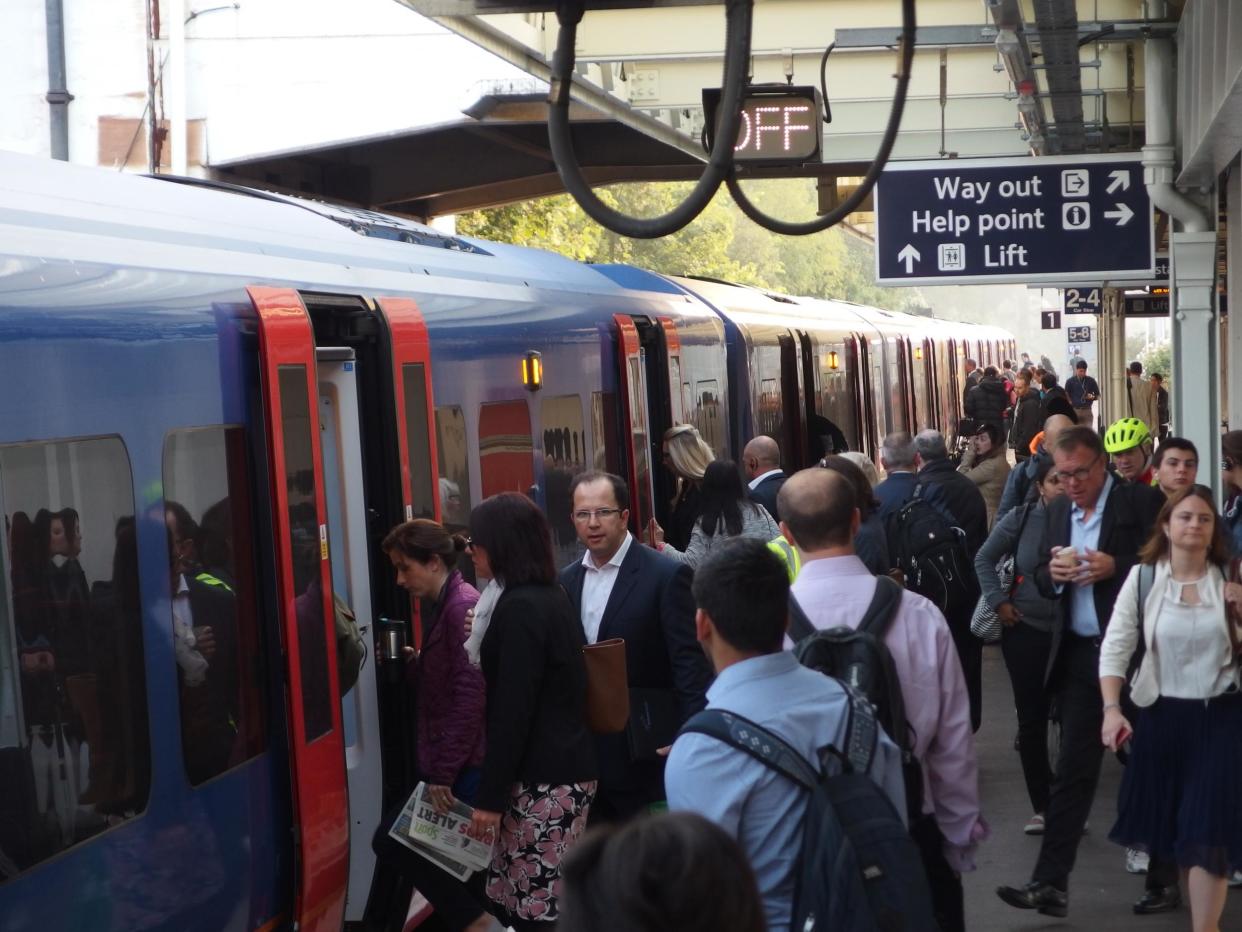South Western rail commuters promised more seats and faster trains to London when Anglo-Hong Kong consortium takes over

“It is stunning that such a keen isolationist Brexiteer is willing to hand control and profits to another country,” said one of the Transport Secretary’s constituents on learning of his decision to hand the South Western rail franchise to an Anglo-Hong Kong consortium, First MTR.
“If the Hong Kong government can run our railway, why not the British state?,” said Catherine — an Epsom resident and rail passenger who asked for her last name to be withheld.
Chris Grayling’s other constituents in Epsom and Ewell will be watching closely to see if the new South Western rail franchise delivers the promised improvements.
Both suburbs are connected by rail to London Waterloo. For the past two decades since privatisation, they have been served by South West Trains.
The current operator, part of Stagecoach Group, runs more than 1,600 trains a day, mainly to south-west London, Surrey, Hampshire and Dorset, as well as operating the Island Line on the Isle of Wight
But from 20 August the franchise will be taken over by First MTR. It is 70 per cent owned by FirstGroup, based in Aberdeen, with the remaining 30 per cent belonging to the Hong Kong metro railway operator — majority owned by the Hong Kong government.
Announcing the winning franchise bid, Mr Grayling said: “This franchise will deliver real changes for passengers, who can look forward to modern trains, faster journeys and a more reliable service.”
Waterloo, the London terminus for the franchise, is the busiest transport hub in Europe, with 200 million passengers a year. It is severely constrained by Victorian infrastructure, and in August a huge project will see many platforms lengthened to allow trains to increase from eight to 10 carriages. This programme aims to deliver 22,000 extra seats into Waterloo during the morning peak, and 30,000 leaving the station each evening.
In order to help commuters find these elusive seats, a new smartphone app will provide live information on seating availability and crowding levels, so that passengers can choose the best place to stand to board the train. Those same smartphones will, for the first time on the South Western network, be able to carry barcoded tickets to replace the old paper variety.
A new Smartcard will be rolled out, automatically offering the cheapest walk-up single or day-return fare. Part-time workers will be able to buy flexible season tickets that cover fewer than five days a week.
Anthony Smith, Chief Executive of the independent watchdog, Transport Focus, said: “We are looking forward to working closely with First MTR as it delivers these enhancements, emphasising this must be in a way that does not cause undue shorter term disruption.”
Mark Smith, the former British Rail manager who founded the Seat61 international rail website, welcomed “a new direct service from Portsmouth to Bournemouth and Weymouth, and better Sunday services.”
Mr Smith also applauded the decision to refurbish 18 class 442 trains, known as “plastic pigs” for their distinctive front ends. They will return to service on the London-Portsmouth line. “Using similar carriages to the InterCity 125, in my view the 442s are amongst the nicest trains to travel in which ever turned a wheel on the Southern,” he said.


